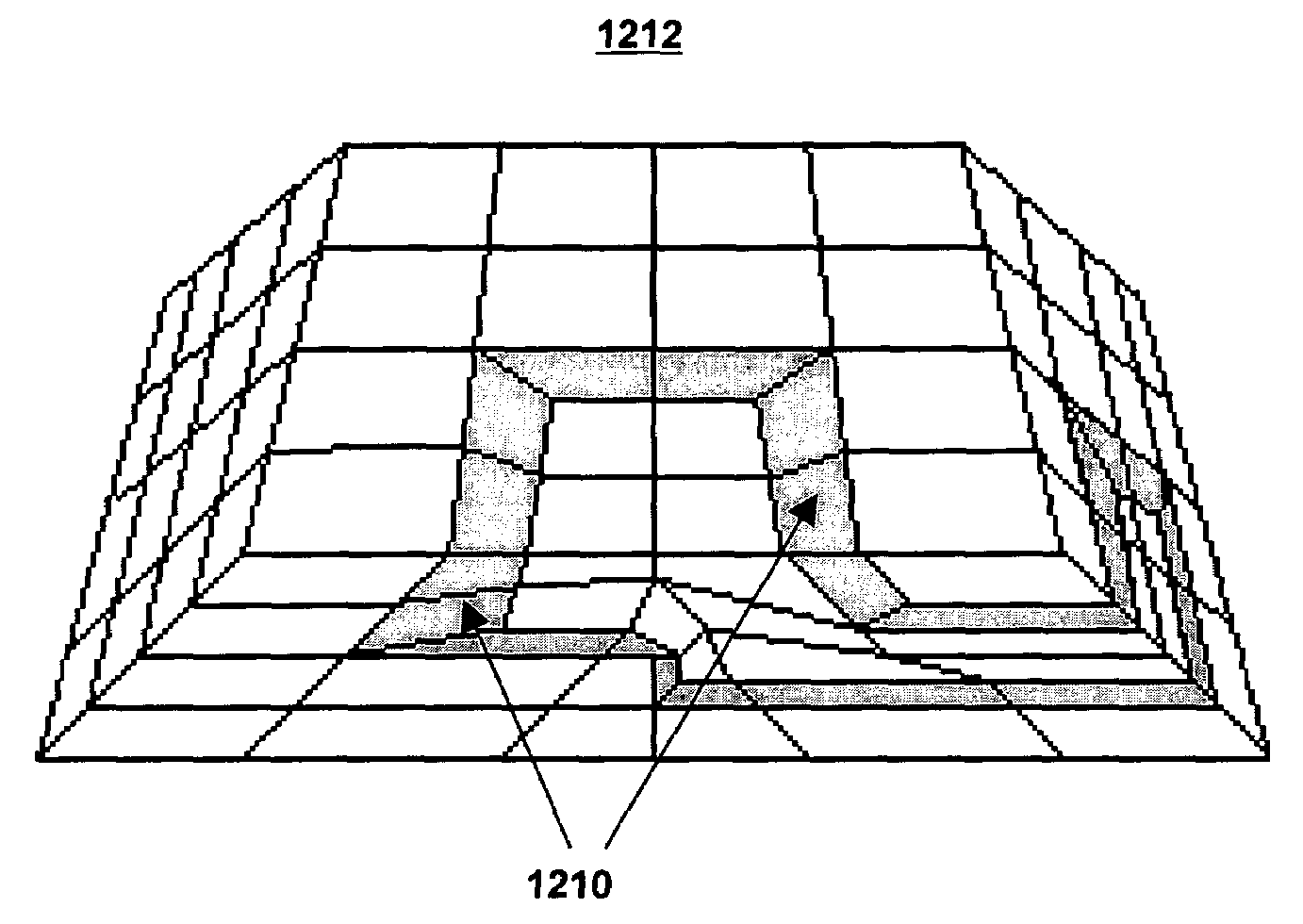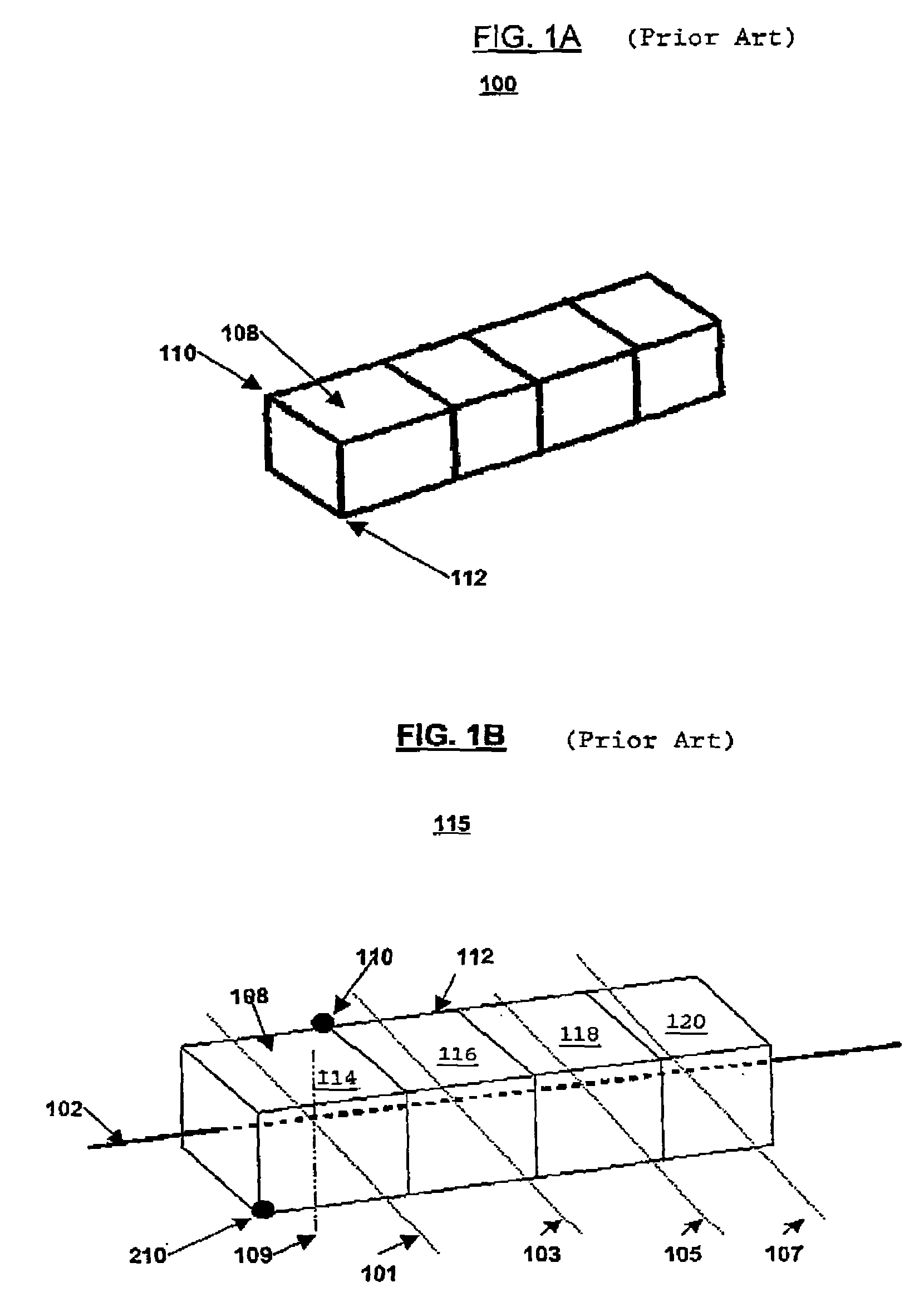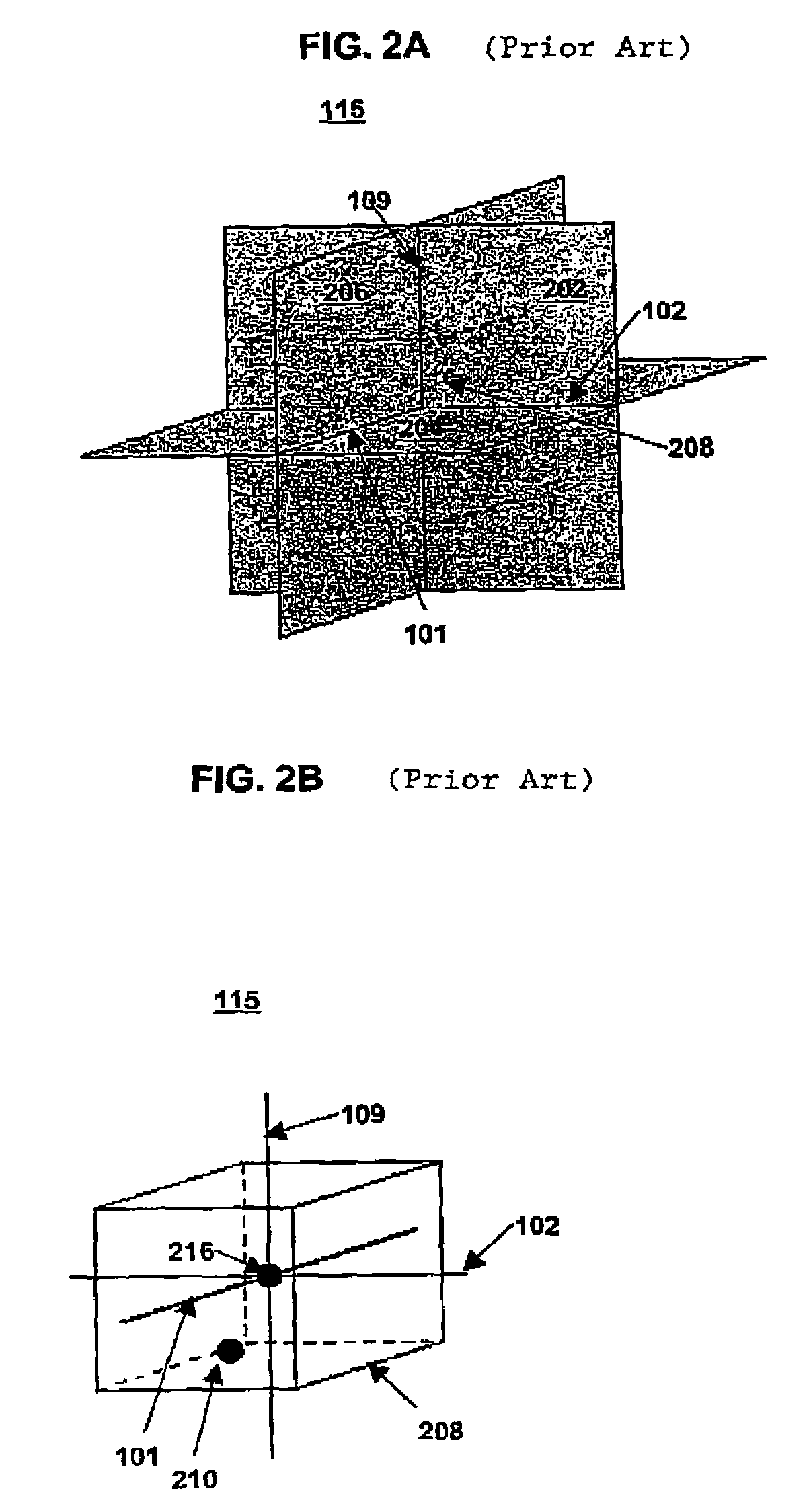Method of modifying a volume mesh using sheet insertion
a volume mesh and sheet inserting technology, applied in the field of computer modeling of physical systems, can solve problems such as user interaction tim
- Summary
- Abstract
- Description
- Claims
- Application Information
AI Technical Summary
Benefits of technology
Problems solved by technology
Method used
Image
Examples
Embodiment Construction
[0036]In accordance with embodiments of the present invention, a sheet insertion algorithm may be followed (as executed by a machine-readable medium) to modify a finite element volume mesh using a dual of a volume mesh (e.g., a three-dimensional brick structure). FIG. 4 shows a block diagram including exemplary elements employed in a sheet insertion algorithm in accordance with embodiments of the present invention. A volume mesh 400 may include a stack of hexahedral elements (hexahedrons) 402, 403 where each hexahedral element includes six quadrilateral faces 404 and eight predetermined nodes 406 with each node formed at an intersection of three edges 408. As shown in FIG. 4, a dual 409 of the stack of hexahedral elements 402 may be generated (following the steps of FIG. 1B) using volume chords 416, 417 where an intersection of multiple chords forms volume centroids 418, 419 in the middle of hexahedral elements 402, 403. Advantageously, a twist plane 412, defined to start from mesh ...
PUM
 Login to View More
Login to View More Abstract
Description
Claims
Application Information
 Login to View More
Login to View More - R&D
- Intellectual Property
- Life Sciences
- Materials
- Tech Scout
- Unparalleled Data Quality
- Higher Quality Content
- 60% Fewer Hallucinations
Browse by: Latest US Patents, China's latest patents, Technical Efficacy Thesaurus, Application Domain, Technology Topic, Popular Technical Reports.
© 2025 PatSnap. All rights reserved.Legal|Privacy policy|Modern Slavery Act Transparency Statement|Sitemap|About US| Contact US: help@patsnap.com



